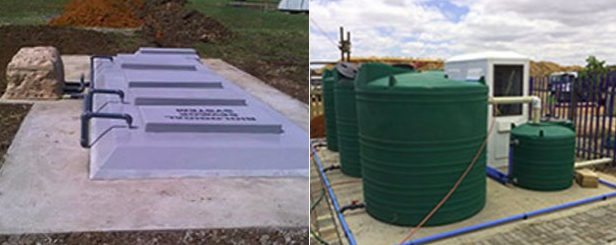#BizTrends2017: Water Recycling, Re-use and Sustainability
Published on by Theunis Coetzer, Employee at SewTreat in Technology
SA has made huge leaps in provision of clean water, but there is still a significant amount of untreated sewage contaminating our water courses.

Stats SA indicated in 2013 that 90.8% of South African households have piped water to their dwellings. On 18 November 2015, Zandile Mathe of the Department of Water and Sanitation indicated that 30% (248) municipal waste water treatment plants are in critical state.
This indicates that although SA has made huge leaps in provision of clean water, there is still a significant amount of untreated sewage contaminating our water courses.
Housing and infrastructure developments across the country have been disapproved by councils due to the lack of capacity at their respective waste water treatment plants. This has a huge impact on the South African economy as it directly impacts investment, job creation and economic growth.
In 2017, we can expect to see onsite waste water treatment plants becoming more popular as they will become the only way that developers can continue with their respective developments. This entails the procurement of an onsite waste water treatment plant that is operated by the owner of the development and not the respective council.
Homeowners, lodge operators and other small producers of waste water are also now realising the value of onsite waste water treatment. The cost of procuring potable water from the council or the cost of electricity to pump from boreholes can be effectively mitigated by re-using the effluent through an onsite DIY type waste water treatment plant. In recent case studies it was found that a guesthouse that irrigates their garden three times a week can save up to 40% on their water bill by installing an onsite treatment facility. This trend is going to grow rapidly in 2017.
The technology
There are various suppliers of onsite waste water treatment facilities in South Africa, from small plants that treat 1,000l per day up to modular plants that treat 500kl per day. Although there are various regulatory considerations, the majority of systems are submersed aeration media with return activated sludge (SAM-RAS) plants.
Traditionally, the technology was dependent on electricity and due to the aeration time needed, this was not cost effective for solar operation. The newest development in the industry is that of non-electrical waste water treatment plants. The first plant is in testing phase and the impact of these plants will be revolutionary. The capital cost is reduced by 50% and the operating cost by 80%.
These developments will make it affordable for a middle class family to recycle 100% of the waste water they produce at a very low capital input.
Read full article: Biz Community
Media
Taxonomy
- Water Reuse & Recycling
- Water Access
- Technology
- Integrated Water Management
- Reuse
- Sustainability
- Water Supply
- Water Management